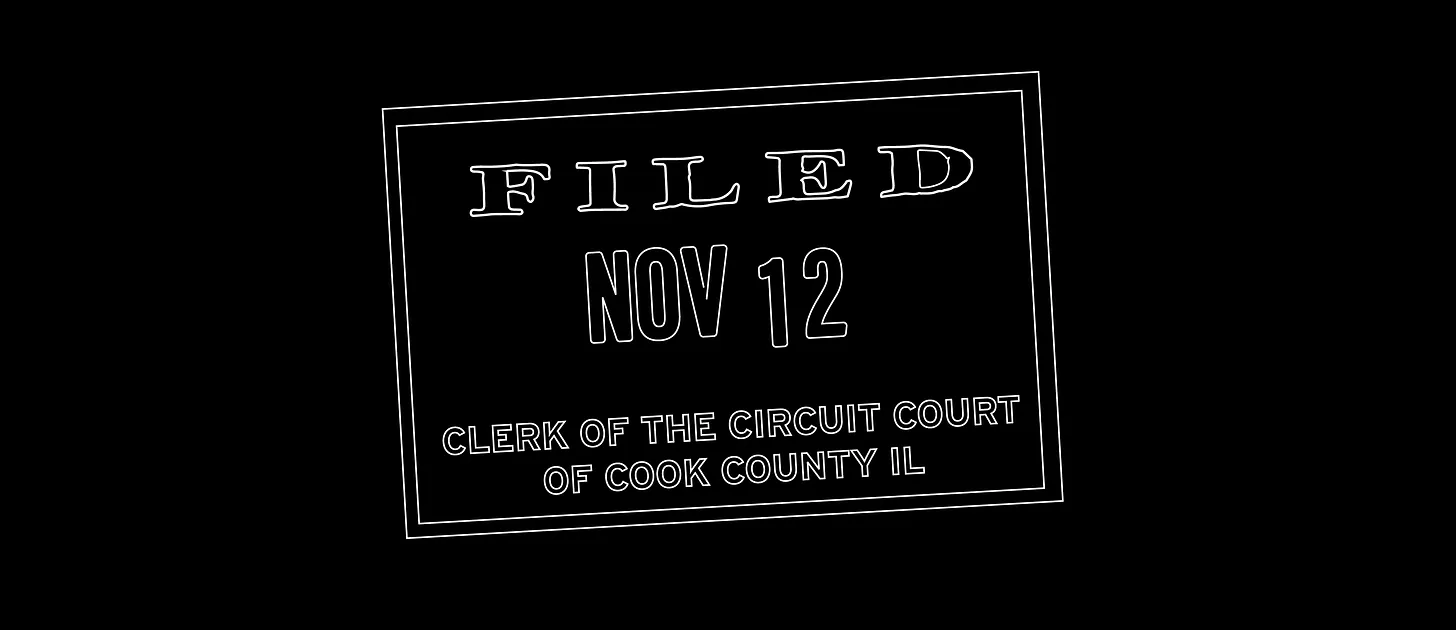For over 20 years, we worked with CVLS—a non-profit legal organization in Chicago and the state’s largest legal firm—to communicate and advance their business.
While CVLS’s goals may sound familiar to anyone who works in or with nonprofits—to increase volunteers, donations, and visibility with people in need—our approach wasn’t.
Because CVLS is different.
Their niche was helping those who couldn’t afford lawyers and whose challenges didn’t offer the kind of returns other law firms were interested in.
They helped over 15,000 Chicagoans a year—those who were often one paycheck away from trouble—by providing equal access to the law.
But CVLS accepted no government grants.
On the face of it—that might not sound remarkable. Yet, it was because it forced CVLS—unlike their competitors—to be entrepreneurial.
They recognized that they couldn’t sit back and wait for funding. To survive, they had to make their case to the people who lived and worked in their city.
That’s where we came in.
Our client wanted to highlight how they were better than their competitors. They did an outstanding job and were certainly faster and cheaper.
But “better” implied they were similar to the other legal aid organizations.
Conversations with CVLS leaders and lawyers made it clear they weren’t just better. They were different.
We started there.
Consider the annual report below. In 1996, Chicago held the Democratic National Convention to nominate Bill Clinton and Al Gore for reelection. The convention had an unexpected effect on our client’s business.
CVLS had its worst fundraising year in history.
Why? Because the Democratic Party heavily canvased law firms and individual lawyers, pressing for donations in advance of the convention. CVLS lost out.
We called attention to this—wrapping an American flag over a Chicago neighborhood and using patriotic colors to simply but powerfully articulate how CVLS helped Americans. We started profiling lawyers and clients that made a difference and found compelling stories to bring forward.
“Very street smart, very honest, and very political. One of the
best-written books out there.”
— Mead Annual Report Show
Over 20 years, we methodically communicated fundamental strengths.
We did so by putting a face to the organization—showing real cases, real people, and real lawyers in ways that broke industry norms and expectations.
The voice was clear, powerful, and unequivocally DIFFERENT. Consider the “letter to the shareholders” below.
We intentionally used design elements to separate CVLS from competitors. We didn’t aim for glossy and polished—but honest, hardworking, functional, and true.
The benefits of being different—not “better”—were enormous.
“Beautifully rendered. Very strong. Very simple.”
— Mead Annual Report Show
The non-profit attracted and retained more volunteer lawyers because we reminded lawyers of why they chose their profession in the first place—to help people like 93-year-old Armetta, profiled in this report:
The differences started to create buzz, and with greater awareness, our client reached more people in need and made a bigger impact.
Financial support and donations soared because donors knew what the organization stood for.
“Raw, real, visceral…unpretentious, and straightforward.”
— Mead Annual Report Show
For example, this annual report—which we drew by hand—profiled the system of neighborhood clinics. The message? CVLS went wherever they were needed most.
Even we felt inspired when a prominent judge told me she looked more favorably on clients entering the courtroom represented by CVLS. Because she knew what the organization stood for, that the lawyers would be thorough and prepared, and the clients sincere.
As designers, we must go beyond the traditional notion of simply making things better.
There is transformative power in focusing on what makes our clients different.
By understanding and emphasizing unique qualities, we helped CVLS not only stand out from competitors but also reach a wider audience. They became a well-funded and inspiring place for top lawyers to volunteer and reconnect with their sense of purpose.
Employers even encouraged their lawyers to move billable hours into their volunteer work because the cause was clear.
Most importantly, the inflow of funding and committed lawyers brought resolutions to problems faced by those who desperately needed help and had nowhere else to turn.
As designers, it’s our job to hone in on what makes an organization distinct so we can drive positive change, foster awareness, and help our clients make a lasting difference.
Here’s a simple question to help you get started—one that comes from a great strategy professor at Chicago Booth:
“What makes this company great?”
This is not an exercise in settling for your first answer. Or for creating a generic, “Company XYZ is dedicated to delivering high-quality service and creating value for customers and stakeholders through continuous innovation and improvement.”
That’s depressing. We’re going for inspiring.
If other companies could give the same answer without hesitation, that’s not your answer. It’s just “cocktail party chatter,” as the strategy professor would say.
Push yourself—and your client—to get specific.
Avoid words that end in “er”—better, smarter, faster, cheaper—because they signal comparison.
Take your ideas and ask “Why is that great?” repeatedly to drill down. Keep asking until you reach a specific answer that is “non-transferable.”
Now, focus on the best ways to recognize and showcase the intrinsic value of what is truly different to create a meaningful and impactful presence in the world.
Share different—not better—and you multiply the impact of your work.





